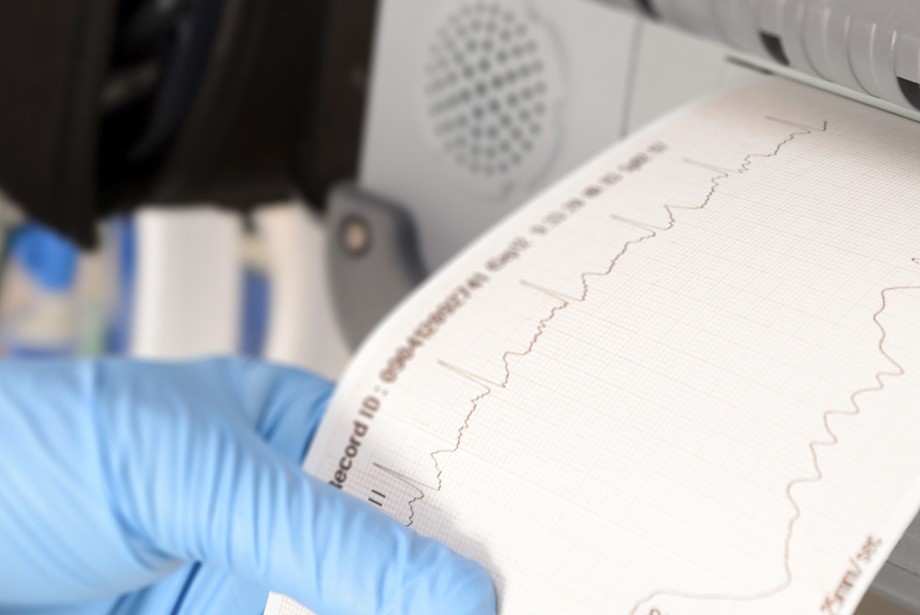
Atrial fibrillation: symptoms to watch out for
Atrial fibrillation is the most common arrhythmia in the general population and its prevalence tends to increase with age
The majority of patients suffering from atrial fibrillation are over 65 years old, with a greater involvement of men than women.
What is atrial fibrillation?
Atrial fibrillation is a heart disease and occurs when the heartbeat is irregular and disorganised, often too fast (the heart fibrillates).
At the root of this abnormality is an electrical defect in the heart which leads to atria and ventricles not being synchronised because the number of beats in the atrium is higher than in the ventricles.
In normal, the electrical signal originates in the sinoatrial node located in the right atrium: from here the signal reaches the left atrium, the atria contract, the impulse passes through the atrioventricular node (a sort of dam between the atria and the ventricles) and the electrical impulse then passes to the ventricles.
These in turn contract and pump blood to the rest of the body.
In subjects with atrial fibrillation, the contraction of the upper part of the heart (the atria) is arrhythmic and is not synchronised with that of the lower part (the ventricles).
DEFIBRILLATORS OF EXCELLENCE IN THE WORLD: VISIT THE ZOLL BOOTH AT EMERGENCY EXPO
The three types of atrial fibrillation
From a clinical point of view, there are three types of atrial fibrillation: paroxysmal, persistent and permanent.
We talk of paroxysmal atrial fibrillation when the episodes occur and resolve within a week; persistent atrial fibrillation is defined as atrial fibrillation that lasts more than 7 days and in which therapeutic intervention (pharmacological or cardioversion, i.e. the delivery of an electric shock to resolve the arrhythmia) is necessary to interrupt it; finally, permanent atrial fibrillation is the form that is judged to be no longer reversible and the patient no longer takes drugs to control the rhythm.
Symptoms of atrial fibrillation
Patients with fibrillation generally experience a sensation of an irregular, often accelerated heartbeat; they may also experience shortness of breath and a feeling of weakness.
Symptoms may be episodic or occur more frequently during physical exertion.
However, in some cases, which are not so rare, atrial fibrillation is asymptomatic.
These cases are very delicate because the patient does not feel any warning signs, any treatment is delayed and the heart may suffer a reduction in its functional capacity, as well as increasing the risk of peripheral embolic phenomena.
In fact, fibrillation significantly increases the risk of thrombotic events: the mechanical immobility of the atria can promote the formation of clots that can reach the cerebral circulation and cause ischaemia and stroke.
Certain conditions can favour the onset of this form of arrhythmia, such as high blood pressure, heart failure, diabetes, valve disease and the aftermath of heart surgery.
In less than 30% of cases, however, fibrillation is defined as isolated, as it occurs even in the absence of known favourable conditions.
DEFIBRILLATORS, VISIT THE EMD112 BOOTH AT EMERGENCY EXPO
Tests for diagnosis
In the presence of an irregular heartbeat it is advisable to consult a cardiologist or arrhythmologist, who will invite the patient to perform a series of tests.
The test of choice for diagnosis is the electrocardiogram.
Early diagnosis is essential to safeguard the patient’s cardiovascular health.
Uncontrolled fibrillation can lead to heart failure and increase the risk of stroke.
Read Also:
Inflammations Of The Heart: Myocarditis, Infective Endocarditis And Pericarditis
Quickly Finding – And Treating – The Cause Of A Stroke May Prevent More: New Guidelines
‘D’ For Deads, ‘C’ For Cardioversion! – Defibrillation And Fibrillation In Paediatric Patients


